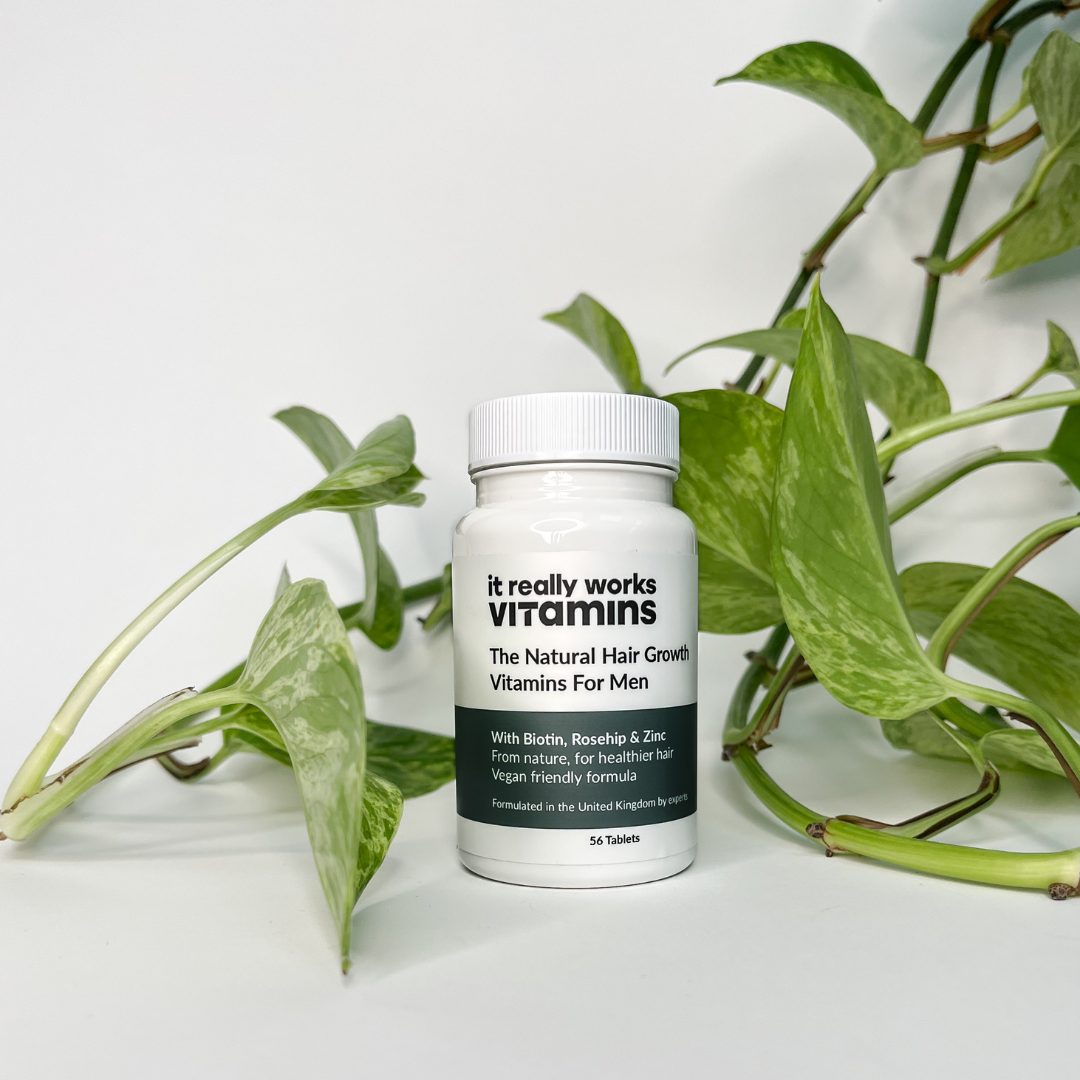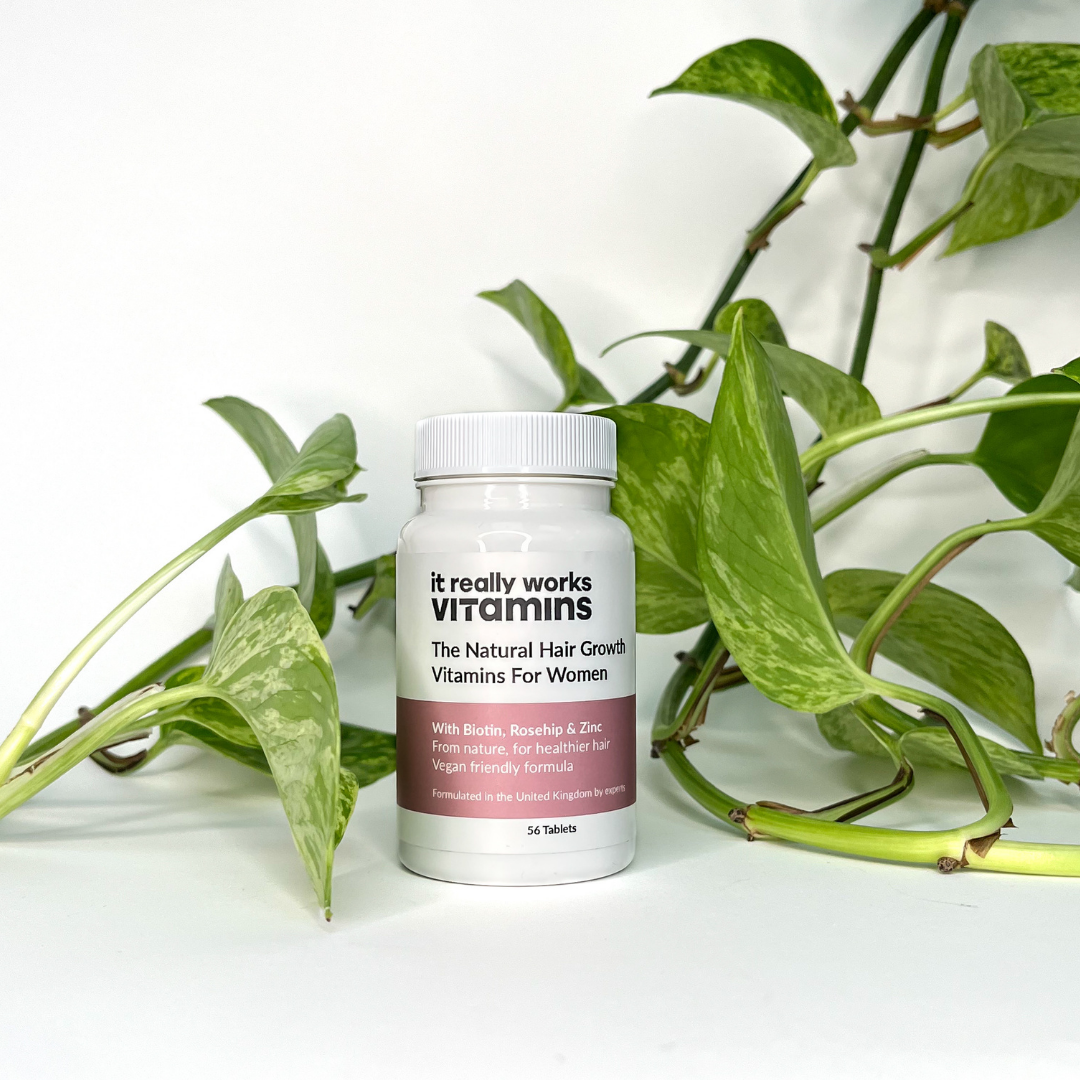We’re going to be going over the ins and outs of hat-wearing, and its effect (if any) on our hair.
“Take that hat off, your hair will fall out” sounds like your classic old wives’ tale, but isn’t it the case that many of the best old wives’ tales have at least an element of truth in them?
After all, who knew that carrots really can help you see in the dark!
But can wearing a hat every day actually cause or contribute towards hair loss?
We looked into this so you don’t have to, and we’ll warn you now, the results are quite a lot to take in and there are certainly a few interesting ideas to unpack.
So without further ado, let’s dive right in.
First thing’s first, there isn’t a completely clear-cut answer to the question “can hats cause hair loss?”
Like most things, there are a lot of elements to consider, and essentially, the answer may depend on the person wearing the hat.
The main issue here is that there hasn’t yet been a great deal of scientific research into the subject.
But, there has been one notable study in the area.
A study by Gatherwright et al., (2013) used a combination of questionnaires, photographs and biological measures to investigate whether a range of factors were associated with increased male hair loss. The participants were all identical twins, and each person’s data was compared with that of their twin in order to get a more accurate picture of the extent to which external factors outside of genetic predisposition contribute to hair loss (or lack of).
Identical twins are as close as you can possibly get to being genetically identical, using them as participants makes it easier to get a clear picture of the external factors being investigated, without having to take into account natural genetic differences.
Interestingly, the study found not only that hat wearing did not seem to contribute to hair loss, but that daily hat use was in fact associated with decreased temporal hair loss – this is a genetic type of hair loss often referred to as the common ‘receding hairline’ that many men will be familiar with.
So, there we go – we may as well all get to the shops and stock up on the beanies, right?
Not so fast!

There is speculation that for people who are already predisposed to hair loss genetically, wearing a hat may exacerbate the issue. Here are a few of the main ideas.
- Hair pulling
- Reduced circulation to hair follicles
- Hair breakage and split ends
The first issue is hair pulling. It is argued that putting on or taking off a hat could pull hair that is already damaged and thinning, speeding up the process of hair loss.
Secondly, wearing a hat could cause tension on the follicles. This is probably the most well circulated argument (no pun intended). It is argued that wearing a very tight hat could potentially cut off circulation to the hair follicles, meaning they would be starved of oxygen and nutrients and ultimately die. However scary this might sound, though, the general consensus is that this is extremely unlikely, unless you’re wearing literally THE tightest hat in the world for a lot of hours at a time.
Hairstyles such as tight ponytails are much more likely to put your circulation at risk in this way, by causing a condition called ‘traction alopecia’.
The main symptoms of the condition are redness, soreness, itching, scaling, blisters or bumps on the scalp and inflammation of the hair follicles. Traction alopecia can be reversed, but if left alone it can lead to hair follicles so scarred and damaged that they cannot grow any healthy new hair
Perhaps this is something worth looking into if you regularly wear tight ponytails or dreadlocks, but there is no real evidence that wearing hats alone is enough to cause this condition.
Interestingly, smoking can also affect circulation to the hair follicles, and there has been a bit more scientific research done to support these claims. If you’re interested in this, or other ways in which smoking can result in hair loss, check out some of our other videos!

Lastly, there are a few indirect ways that wearing hats could make hair loss appear more dramatic than it perhaps is, the main one being hair breakage and split ends.
These issues aren’t directly hair-loss related, but aesthetically they could make your hair look a bit thinner. Wearing a hat daily could cause split ends and breakage, which definitely has the potential to make the hair look generally less healthy and could lead to the illusion of hair loss.
Ok, so there we have the reasons that hat wearing *may* contribute to hair loss, but it is important to take these with a pinch of salt and remember that essentially, there isn’t any scientific research that suggests a solid link.
So where did this myth come from, you may ask?
Well, there are a few possibilities.
- Word-of-mouth and the media
- Hair left inside the hat
- Onset of hat-wearing coincides with onset of hair-loss
- The ‘Hat head’ illusion
The biggest issue is probably the circulation of the idea through word of mouth and scaremongering in the media. For example, this frankly terrifying statement appeared in a 2015 GQ article:
“Guys that are wearing a hat all the time are creating their own male pattern baldness. They’re not allowing the sweat glands to breathe, and they’re clogging the follicles, which prevents hair growth. You need oxygen in order to produce the oils that help your hair grow” (Corsillo, 2015)
However in an interview with the Huffington Post Dr. Alan Bauman, a board-certified hair restoration physician, completely debunked this statement, claiming it to be “100% false”. Dr Bauman went on to explain that male pattern hair loss is hereditary and caused by hormones, which we will discuss in a little more detail shortly.
There are also a few physical signs that may lead people to jump to certain conclusions about what is causing their hair loss.
For example, regular hat-wearers often report noticing hair left inside their hat when they remove it at the end of the day, and understandably assume this is evidence enough that the hat is causing them to lose hair.
However, this is not the case. It’s actually completely normal to lose up to 100 strands of hair every day, it’s just that when you’re wearing a hat those strands are being collected.
Sure, it can look quite alarming, but it’s only because we don’t usually collect or even notice the hair that falls out of our heads on a day-to-day basis.
Secondly, many people begin wearing hats when they start to notice hair-loss, in an effort to conceal it.
As a result, when their genetic hair-loss inevitably begins to accelerate and worsen, it’s not unreasonable to jump to the conclusion that the hat-wearing is causing this, when in reality it is likely to simply be the natural progression of balding. Remember, correlation does not equal cause!
Finally, the phenomenon creatively known as ‘hat head’ can create the illusion of thinner, more sparse hair, even if this isn’t the case.
This is an extremely common problem with hat-wearing, and if you haven’t experienced it yourself, you’ve probably seen it on some other poor soul at some point!

When the hair is pushed in unnatural directions by a hat, it may look flat or particularly thin in some areas when the hat is removed. This can be mistaken for a sign of hair loss, when in reality it is simply that the hair isn’t sitting in its natural and preferred position.
Essentially, hair-loss is usually ultimately down to genetic factors, although the exact science of this isn’t well known. It is generally thought that male-pattern baldness is the result of the hair’s growth phase becoming shorter, and the time between the shedding of hair and a new growth phase becoming longer
Also, the hormone DHT, which is a product of the breakdown of testosterone shrinks the hair follicles, preventing hair from growing healthily; when the follicles begin to miniaturise, the hair they produce becomes thinner and weaker over time, before ceasing to produce any hair at all.
Unfortunately, hair loss is extremely common and according to the NHS, around half of all men will notice some kind of hair loss by the age of 50 and in fact, the International Society of Hair Restoration Surgery reported that 40% will experience hair loss by the age of 35 , so you’re certainly not alone if it’s something you’re struggling with.
And male-pattern baldness often runs in families, so if members of your family have hair-loss, you are extremely likely to inherit the condition too.
Key symptoms of genetic hair loss include a receding hairline – that’s a hairline in the shape of an ‘M’, bald patches or thinning of the hair on the top of the head
So, the chances are, your hair loss has a lot more to do with your genetic makeup than it does your hat-wearing habits.

But, we also know that hair-loss is often multifactorial, meaning a variety of different things can contribute to your hair-loss.
Granted, genetics may be having the bulk of the say in the issue, but that doesn’t necessarily mean there’s nothing you can do about it. There are a whole load of lifestyle factors you can control that may help you slow down the process of hair loss.
- Stress
- Vitamin deficiencies and hair loss
- Certain hair styles
- Alcohol, exercise and smoking habits
A few examples of lifestyle factors that may contribute to hair loss are stress, vitamin deficiency (that’s what we’re here to help with!), certain hair styles such as perms and alcohol, exercise and smoking habits.
So, evidently, lifestyle can contribute to hair loss at least a little bit. And if each of these factors, combined with wearing a tight hat regularly do cause a bit of extra hair loss, you may end up with a more noticeable issue.
But hold up, because we aren’t done yet!
So the question of whether hats do cause hair loss is kind of up for debate, but get this – there is also an argument that regularly wearing hats can actually IMPROVE the health of your hair!
We know, it’s a roller-coaster, right?
- Protects hair from the elements
- Prevents breakage in the winter
- Protects hair and scalp from harmful UV rays
Wearing a hat can be invaluable in protecting your hair from the elements (anyone who has gone out on a windy day with long hair will be aware of this already!)
And this can be the case in both winter and summer. In winter, especially if you go outside with wet hair, it is highly beneficial to protect your strands from the cold, as wet hair can become weak and prone to breakage in wintry conditions.
On the flipside, in summer it can be beneficial to wear a hat not only for your general health and to reduce the risk of sun stroke, but to protect your hair and scalp from UV rays, preventing the heat from drying out your hair or burning your skin.
In fact, wearing a hat in the summer is absolutely vital, and far outweighs the tiny risk of your hat increasing hair loss. Exposure to UV rays can cause a whole host of skin issues including discolouration, freckles, wrinkles and premature ageing, not to mention the increased risk of skin cancer Don’t throw away your baseball cap based on misinformation and rumours.
So, let’s wrap up what we’ve covered so far.
First of all, in theory, regularly wearing a very tight hat could contribute in a small way towards hair-loss.
However, the risk really isn’t worth worrying about and, in fact, the elements your hat protects you from could actually pose way more of a risk to your hair health.
This could be an explanation for the findings of the study on twins that we mentioned earlier, in which hat wearers actually had less hair loss than non-hat wearers, but more research is needed to confirm if this really is the case.
Having said that, due to the current lack of research, it can’t be totally confirmed that wearing a hat will absolutely not cause hair loss, either. So if you do feel as though your hat wearing habits are impacting on your follicles, what can you do?
- Try a looser hat or style
- Don’t regularly combine a tight hat with a tight hairstyle
- Dry your hair before putting a hat on
- Choose your hat’s material wisely
Well, there are a few easy things you could try. Firstly, if you don’t want to stop wearing hats altogether, you could choose a looser style to avoid unnecessary tension causing stress on your hair follicles.
If you have long hair, maybe try not to combine wearing your hat with regular tight hairstyles. Alternatively, you could simply reduce how often you wear a hat – perhaps save it for cold days or ones where you need some sun protection.
If you think ‘hat head’ is the issue you’re dealing with, there are definitely a few tips and tricks to help with that – here are just a few of them!
Firstly, make sure your hair has completely dried before putting on your hat if possible, as allowing it to ‘set’ underneath can really exacerbate the appearance of ‘hat head’ and make it much more difficult to sort out. Secondly, choose a hat which has smoothing material, rather than one that is rough and will make your hair frizz,
But most of all, don’t stress over it! Because, ironically, stressing about whether your hat is causing your hair to fall out is actually much more likely to make your hair fall out than the hat itself is!
Another subject we just wanted to touch on before we go is a certain type of hat that may be a little bit different to what we’ve been considering so far – and that is helmets.

Many of us wear helmets in our daily lives, perhaps you’re a cyclist or motorcyclist, or maybe you wear one for work every day. But have you ever thought about how your headwear might be affecting your scalp and hair health? Especially if hair loss is something you’re already dealing with or if it runs in your family, this might be a concern for you.
But rest assured there’s no need to worry too much – as with regular hats, there isn’t any scientific research connecting the two, although there has been speculation that there may be some sort of link. Again, it isn’t worth stressing too much about, but there are a few ways that you can help prevent your hair from being damaged by your helmet.
- Keep your helmet clean
- Make sure your helmet is the right size
First of all, make sure to keep your helmet clean. You do not what your scalp to become dirty as this could lead to infection, which could be detrimental to the health of your hair. It’s important to note, actually, that this could also apply to any other type of headwear, so do keep it in mind. For regular fabric hats, you can simply stick them in the washing machine regularly, or for helmets, wash them with hot soapy water and use an anti-bacterial spray for extra hygiene.
You should also make sure your helmet is the correct size, as one that is too big or too small could move around and cause your hair to be pulled at the root. This could ultimately lead to traction alopecia, which we explained in a bit more depth earlier on in the video.

So what do you think? Do you believe that hats can contribute towards hair loss? Let us know your own experiences and thoughts in the comments, because this one is definitely still up for debate!
If you’re struggling with hair loss, our vitamins are a great option. Our products have been featured in a range of magazines including Men’s Health and Forbes, and we are so confident in the effectiveness of our vitamins that we offer a money back guarantee! If you use our products for 90 days and your hair is not noticeably thicker and healthier, we will refund you!
Our vitamins are packed with 22 carefully selected micronutrients that will promote the growth of thick, healthy and strong hair, including biotin, copper, selenium and zinc.
We have already helped thousands of men worldwide to get the luscious locks of their dreams, and you could be next!
Find out more information and read our customers’ incredible reviews and inspiring real-life stories over at our website, www.itreallyworksvitamins.com!




